Japan’s most popular MSG maker had to battle some nasty rumors 100 years ago
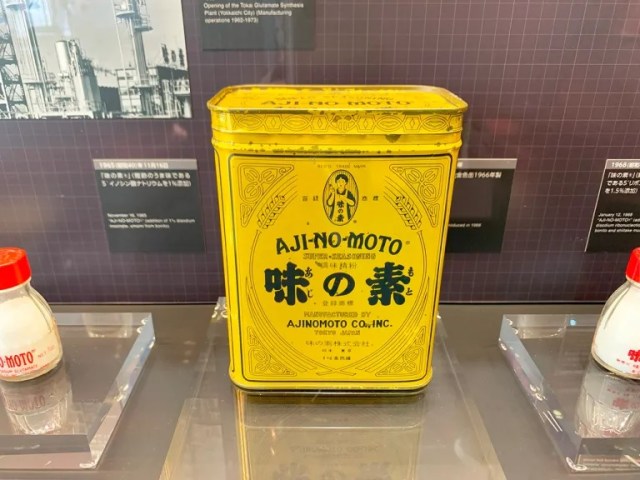
Aji no Moto tasted so good, some people thought there must be some creepy creatures on the ingredient list.
Social media is a double-edged sword, both a way for individuals to connect and share knowledge, but also an avenue for unfounded rumors and even outright lies to spread. Harmful disinformation isn’t an entirely modern problem, though. Case in point: over a century ago, Japanese food and seasoning company Ajinomoto spent years battling a stomach-turning rumor about its signature product.

We found out about this episode from the company’s past while visiting the Ajinomoto Umami Taikenkan, also known as the Umami Science Square, at Ajinomoto’s factory in Kawasaki, the city just south of Tokyo. Though reservations are required for the factory tour, the first-floor museum is open to all and free of charge,
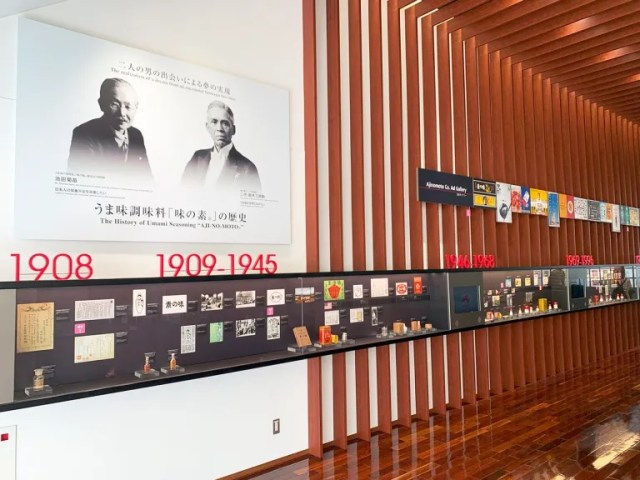
Ajinomoto is best known for Aji no Moto, Japan’s favorite brand of monosodium glutamate. The company was a pioneer in the field, and Aji no Moto can now be found in home kitchens across Japan, becoming so ubiquitous that, like “Levis” or “Kleenex,” “Aji no Moto” is colloquially used to refer to monosodium glutamate in general.
But while Aji no Moto is a familiar foodstuff now, that wasn’t the case when it first went on sale. The seasoning hit store shelves for the first time in 1909, but even 10 years later, Ajinomoto was fighting against rumors that Aji no Moto was…
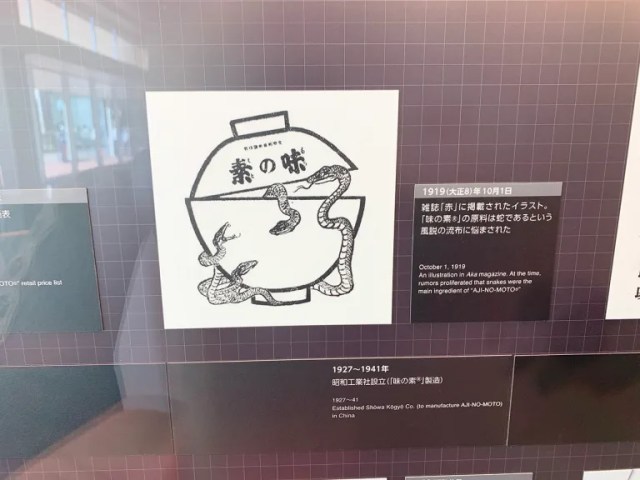
…made out of snakes.
That photo above is a cartoon from the October 1, 1919 issue of magazine Aka showing a bowl with the Aji no Moto (味の素) logo and at least one snake, if not four, slithering through the bowl. Snapping turtle is pretty much the only reptile that’s considered OK to eat in Japanese cuisine (and not even all Japanese are down with it), so this was a rumor Ajinomoto wanted to quash as quickly as possible. Three years later, though, “Aji no Moto is made out of snakes!” was something enough people were still saying that in the summer of 1922 Ajinomoto felt compelled to run newspaper ads in which the company’s director and co-founder Saburosuke Suzuki asserted, “We hereby swear to all the world that snakes are not used in the production of Aji no Moto.”
▼ The no-snakes-used declaration
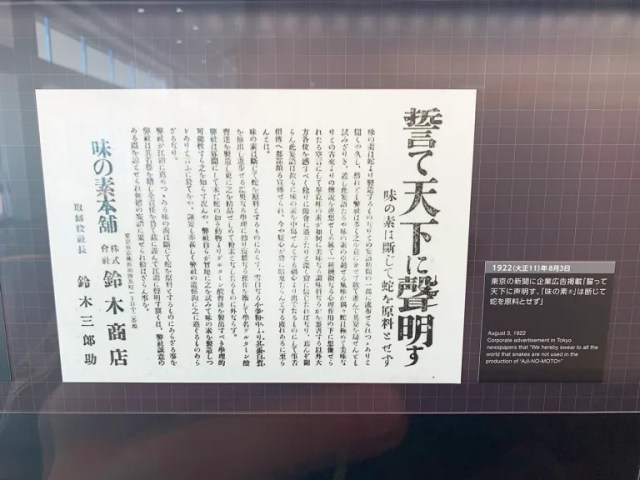
Ironically, the rumor doesn’t appear to have gotten started because people thought Aji no Moto tasted snake-y (remember, people in Japan don’t eat snakes in the first place), or even that it tasted bad. Apparently, when consumers got their first taste of MSG, the problem was that it tasted so good, some people figured there must be some kind of unimaginable secret method by which Ajinomoto was breaking the rules, and eventually enough of these conspiracy theorists settled on the assumption “Yep…must be made with snakes.”
▼ You’d think an assumption that something tastes great because it’s made out of snakes would then lead to the conclusion that snakes must be delicious too, but apparently their conviction was only strong enough to spread rumors about Aji no Moto, not broaden their palates.
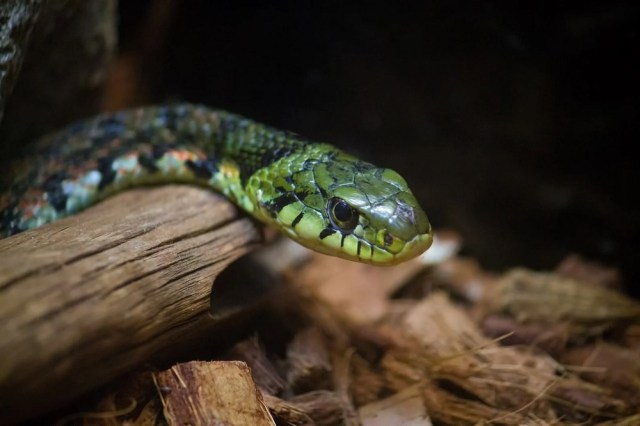
Thankfully, in time the rumors faded, and now we all know that Aji no Moto isn’t made of snakes, and given that it’s a strongly flavorful powder with a name that translates to just “basis of flavor,” perhaps it was to be expected that some people would inaccurately speculate about what the ingredients are.
So what, accurately, is Aji no Moto made from? This stuff.

And now, let’s preemptively shut down any “Aji no Moto is made out of charcoal!” rumors (even if some kinds of charcoal are edible). The truth is that Aji no Moto is made from kelp, or, as it’s called in Japanese, kombu. It’s made from a lot of kombu, with roughly extracts from 300 grams (10.6 ounces) of kombu required to make just 6 grams of Aji no Moto, which is why a little monosodium glutamate goes a long way.
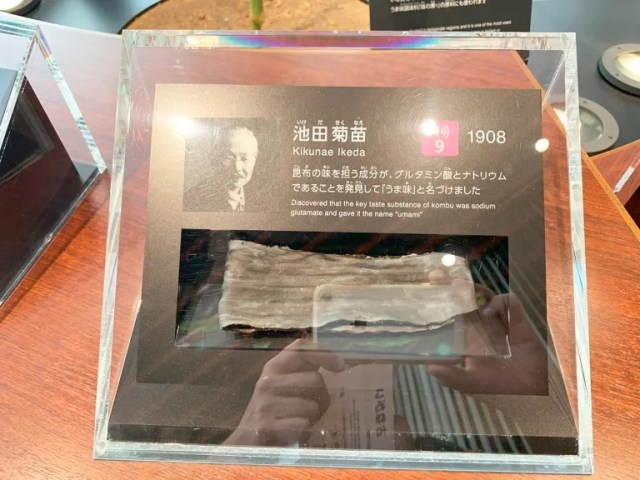

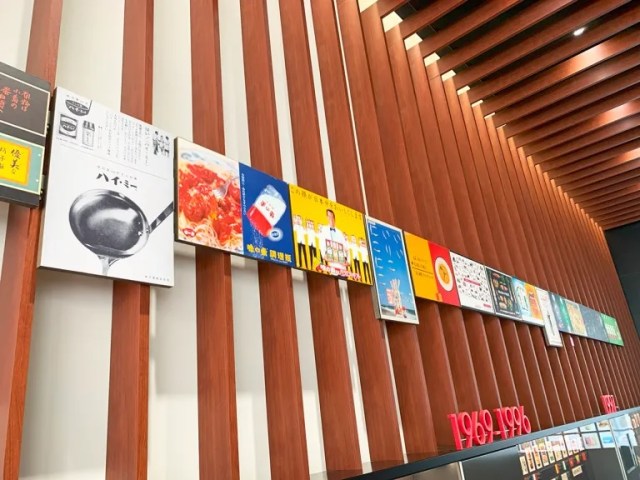
Today, Ajinomoto makes a wide variety of other seasonings and food products, and is part of the pharmaceutical field too. The Umami Science Square’s exhibits highlight the company’s history and major milestones, including its overseas operations and products. It may not be as big as the Cup Noodle Museum in Yokohama, but it’s a pleasant, informative little place, and even through admission is free, on the way out the staff thanked us for coming and gave us a complimentary pack of their Blendy-brand instant coffee mix.

And no, it doesn’t contain any snakes either.
Location information
Ajinomoto Umami Taikenkan / 味の素うま味体験館
a.k.a. Umami Science Square
Address: Kanagawa-ken, Kawasaki-shi, Kawasaki-ku, Suzukicho 3-4
神奈川県川崎市川崎区鈴木町3番4号
Website
Snake photo: Pakutaso
All other photos ©SoraNews24
● Want to hear about SoraNews24’s latest articles as soon as they’re published? Follow us on Facebook and Twitter!
Credit:

0 comments:
Post a Comment